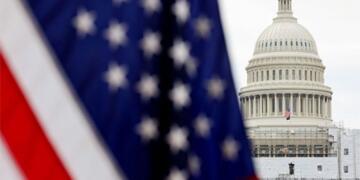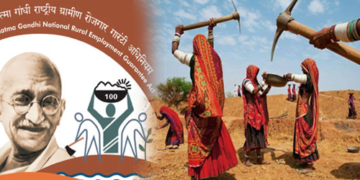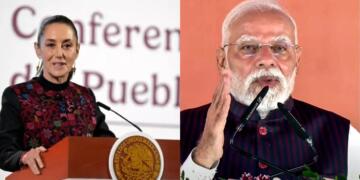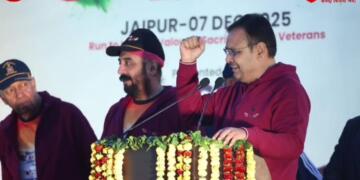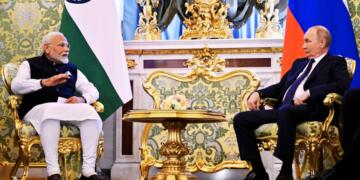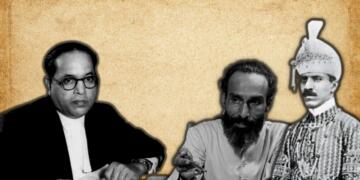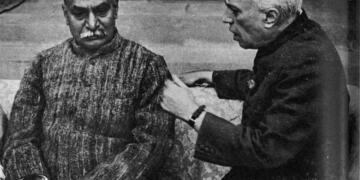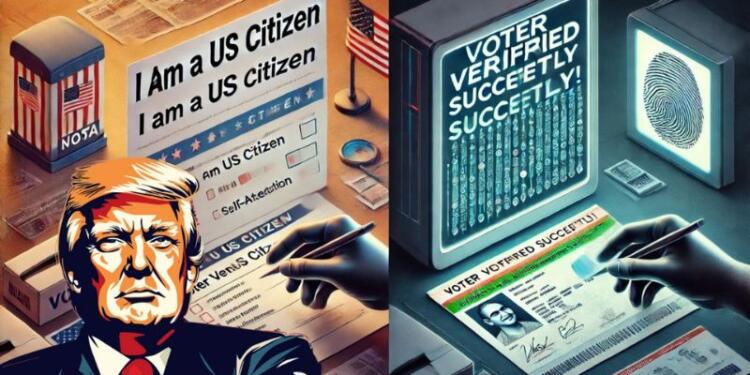US President Donald Trump signed an executive order on Tuesday that would require voters to prove they are US citizens and attempts to prevent states from counting mail-in ballots received after Election Day. The official order cites examples of India and Brazil for voter identification to a biometric database.
The pleasant and well deserved surprise holds greater significance as it comes from the Western sphere which has been notorious for casting aspersions on Indian democracy. Since Independence, the Western intellectuals have been predicting doomsday for Indian democracy.
As early as 1960, the American scholar-journalist Selig S. Harrison predicted: ‘The odds are almost wholly against the survival of freedom and … the issue is, in fact, whether any Indian state can survive at all? In 1967, Neville Maxwell, a Times correspondent, in a series of articles entitled ‘India’s Disintegrating Democracy’ declared, ‘The great experiment of developing India within a democratic framework has failed.’ He predicted that the fourth general elections which were then forthcoming would surely be the last elections to be held in India.? – Bipin Chandra in “India Since Independence”
The historian Bipin Chandra wrote the above text in the introduction of his famous book “India Since Independence.” In 60 years, India has come a long way. Today, the president of the same country, whose journalist once said “that Indian democracy will not survive after its fourth election,” praised India for its voter identification to a biometric database.
It shows India not only served as the largest democracy but has also become an example for the world on how to conduct free and fair elections in a given period of time in its vast land of different demographic, social and environmental conditions.
In his executive order, Trump cited examples of developed and developing countries alike, including India, Brazil, Canada, Germany, Denmark, and Sweden.
Lauding their efforts, he said, “Despite pioneering self-government, the United States now fails to enforce basic and necessary election protections employed by modern, developed nations, as well as those still developing. India and Brazil, for example, are tying voter identification to a biometric database, while the United States largely relies on self-attestation for citizenship.”
Trump’s Praise is a tight slap on the face of Opposition Leaders
In India, opposition leaders from Congress and other regional parties have time and again spread misinformation about the Election Commission of India, accusing it of “bias”.
Congress President Mallikarjun Kharge urged Rahul Gandhi to start a campaign against EVMs and proposed the use of paper ballots in elections. These opposition leaders have always cited Western Nations for using paper ballots and have rejected digitalization. However, the recognized leader of the West, the US, has praised India for tying voter identification to a biometric database. One of the world’s mature democracies has praised the world’s largest democracy for its digitalization and management of elections, where opposition leaders from our own nations have pointed fingers towards the Indian Election Commission.
Trump criticized the current US electoral system, in comparison to India, and argued that America has failed to implement “basic and necessary election protections”.
The order criticized policies allowing mail-in ballots to arrive and be counted after Election Day. The order said Trump’s policy is to “require that votes be cast and received by the election date established in law.” India, despite having the largest voter population, gives election results in a single day, conducts elections timely and also updates voter turnouts, results, etc, within two hours on the Election Commission website because India has digitized itself under Prime Minister Narendra Modi, which has been praised time and again from other countries around the world.
What is a Biometric database linking in India?
The first Aadhaar number was issued in September 2010, marking the beginning of India’s Aadhaar system, which incorporates a biometric database. In order to create a verified identity and encourage financial inclusion in the country, this 12-digit unique identification number was created.
After the Election Commission introduced the National Electoral Roll Purification and Authentication Programme (NERPAP) in 2015 with the goal of bringing about an authenticated and error-free electoral roll, the process of linking the Aadhaar card with the voter card got underway. According to this plan, voters’ Elector Photo Identification Card (EPIC) information was to be authenticated by linking it to their Aadhaar or UIDAI information.
However, a Supreme Court judgment later that year placed it on hold. The Rajya Sabha approved the Election Laws (Amendment) Bill, 2021 after the administration recommended changing the laws in that year. Under the Representation of the People Act of 1950, the Bill made it possible to voluntarily link Aadhaar and voter ID.
Also Read: India rejects USCIRF religious freedom report, dubs panel as ‘entity of concern’
Again the Election Commission has started linking Adhar Card to Voter ID cards to eliminate duplicate voters. To date, 66 crore voters have voluntarily linked their Adhar card to the Voter ID. This month, on March 25, the Election Commission said that a voter declining to share their Aadhaar number with the Election Commission (EC) may have to make a personal appearance before the Electoral Registration Officer (ERO) to show cause for not providing this information.
Key Differences Between India’s Biometric Voter ID and US Self-Attestation System
Self-attestation for citizenship is a procedure whereby people proclaim their citizenship status under penalty of perjury in the United States, as defined by the National Voter Registration Act, 1993 (NVRA).
Both federal and state voter registration forms have a checkbox asking voters to verify that they are citizens of the US. After that, the candidates must sign a declaration attesting to the veracity of their claims.
There is not a centralized biometric verification mechanism in place for ordinary registration. However, certain states might ask for more paperwork if concerns are raised.
Self-certification is not the basis for this verification connection in India. Instead, it is a regulated procedure that compares voter data with the centralized Aadhaar database in order to remove inaccuracies and stop fraudulent or duplicate registrations.


